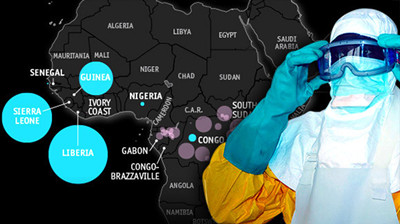A killer in close up

Immune cells which the virus attacks in the bloodstream early on carry the infection to the liver, the spleen and lymph nodes. Symptoms may manifest themselves in a day or two or may wait weeks (see chart). Eventually the virus's spread triggers an immune overreaction known as a cytokine storm. Blood-vessel walls become leaky, blood pressure and core temperature drop, organs fail and the body goes into shock. Various combinations of those and other symptoms kill about 70% of those who get ill.
譯文屬譯生譯世











